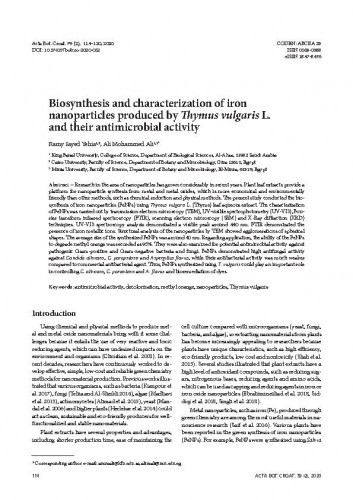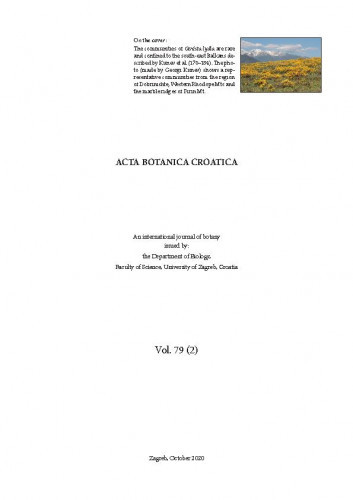Research in the area of nanoparticles has grown considerably in recent years. Plant leaf extracts provide a platform for nanoparticle synthesis from metal and metal oxides, which is more economical and environmentally friendly than other methods, such as chemical reduction and physical methods. The present study conducted the biosynthesis of iron nanoparticles (FeNPs) using Thymus vulgaris L. (Thyme) leaf aqueous extract. The characterization of FeNPs was carried out by transmission electron microscopy (TEM), UV-visible spectrophotometry (UV-Vis), Fourier transform infrared spectroscopy (FTIR), scanning electron microscopy (SEM) and X-Ray diffraction (XRD) techniques. UV-vis spectroscopy analysis demonstrated a visible peak around 440 nm. FTIR demonstrated the presence of iron metallic ions. Structural analysis of the nanoparticles by TEM showed agglomerations of spherical shapes. The average size of the synthesized FeNPs was around 40 nm. Regarding application, the ability of the FeNPs to degrade methyl orange was recorded as 95%. They were also examined for potential antimicrobial activity against pathogenic Gram-positive and Gram-negative bacteria and fungi. FeNPs demonstrated high antifungal activity against Candida albicans, C. parapsilosis and Aspergillus flavus, while their antibacterial activity was much weaker compared to commercial antibacterial agent. Thus, FeNPs synthesized using T. vulgaris could play an important role in controlling C. albicans, C. parasilosis and A. flavus and bioremediation of dyes.
Sažetak

 Acta botanica Croatica : 79,2(2020) / editor-in-chief Nenad Jasprica.
Acta botanica Croatica : 79,2(2020) / editor-in-chief Nenad Jasprica.